高山花园和草甸剧场
致舍景观
“该设计方案优雅地体现了对文化背景的深刻理解与针对场地的负责任修复,同时周密考量了灾害防范、气候适应与韧性策略。”
– 2024年评审委员会
“The design solution is a graceful expression of cultural context and responsible restoration of the site, and carefully addresses hazard mitigation, climate adaptation, and resilience strategies.”
– 2024 Awards Jury
来自 ASLA 对gooood的分享。
Alpine Garden and Amphitheater| Z’scape
项目陈述
PROJECT STATEMENT
高山花园曾是一个村庄的垃圾填埋场,如今已被成功转型为云南多民族地区的示范项目,集栖息地修复、户外环境教育和原住民文化推广于一体。
该项目位于玉龙雪山脚下,距离这座联合国教科文组织认证的自然遗产地仅5公里。项目地处泛喜马拉雅区域,占地6公顷,致力于打造一个可以自我维持的生态系统,同时展现高山植物的自然之美。园区内还设计了一套高效的雨水管理系统,有效保护世界文化遗产白沙古镇免受洪涝威胁。
设计巧妙融合了纳西族传统工艺的历史元素与图案,并以当代手法进行了创新演绎。艺术感十足的露天剧场不仅提升了游客的游览体验,也成为当地社区的重要文化地标。
项目说明
PROJECT NARRATIVE
项目位于丽江玉龙雪山上海拔约2540米的生态山坡,曾在过去十年间被弃用为村庄垃圾填埋场。随着时间的推移,栖息地的丧失对当地敏感物种构成了严重威胁。在泛喜马拉雅地区的雨季,由于场地无法有效收集和滞留雨水径流,地势低洼的白沙古镇面临洪水威胁的风险。
为了改善土壤健康,项目修复了5600立方米的土壤。土壤修复措施包括清除受污染的废弃物,对土壤的化学成分和有机含量进行广泛测试,筛选土壤并添加有机堆肥。在修复过程中,纳西族人采用了一种天然的解决方案——放牧牛群,成功应对了外来入侵植物的问题。
为了满足项目高达95%的用水需求,项目引入了雨水花园系统, 有效降低雨水径流对古镇的威胁。雨水沟渠作为自然溪流系统的一部分,将雪融水输送至白沙古镇以用于农业灌溉。位于北部的圆形蓄水池,被当地人称为“Hylla之眼”,既为整个花园提供灌溉用水,又是重要的野生动物栖息地。
通过恢复90%的本地植物群落,设计将场地转化为一个多样化的高山栖息地。 保留下来的核桃树和梨树为鸟类提供了食物和筑巢场所。步道被抬高60厘米,以确保动物和昆虫的活动不受干扰。岩石不仅具备美学价值,还为野生动物提供了庇护所。多年生草甸全年为传粉昆虫提供了关键的觅食和筑巢场所。荒野花园现已成为一个户外教育中心,突出展示了本地植物和野生动物对丽江生物多样性的意义。
虽然纳西族拥有丰富而独特的文化遗产,但由于交通不便、人口外流和教育资源的匮乏,部落人口在教育发展和文化传承方面面临诸多挑战。
通过纳西社区的参与,设计深受部落文化背景和经验的启发,促进了对身份、文化与自然的深刻理解。在本地匠人的精湛工艺下,石匠和木匠使用来自50公里范围内的材料,完成了所有与石材和木材相关的工作。他们采用传统技艺雕刻并堆砌石材,保留了石材细腻的纹理,同时赋予设计以现代简约感。团队小心翼翼地保留了部落的圣树“许拍”,将其作为视觉焦点,打造出新旧文化无缝融合的文化景观。蜿蜒的木栈道穿过点缀着三叶草的高山草坪,象征着小麦田的垄脊,与周边农田的景观相呼应。
露天剧场作为一件优雅的土地艺术品,被巧妙地布置在正北方向,提供了俯瞰神圣玉龙雪山的视野。它为纳西族雕塑家提供了展示作品的绝佳平台,同时成为当地人热情聚会的户外社交空间。在每年的传统节庆期间,露天剧场变成了一个沉浸式、互动式的场所,让人尽情感受纳西族的舞蹈和音乐魅力。
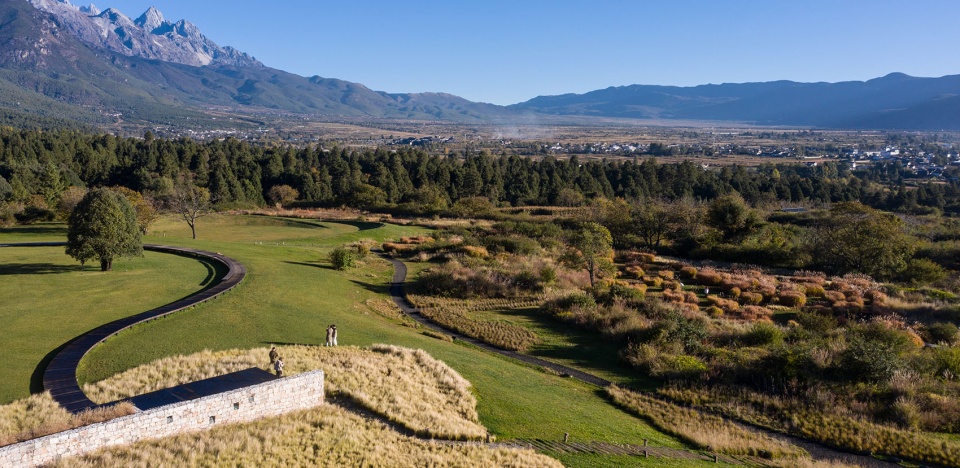
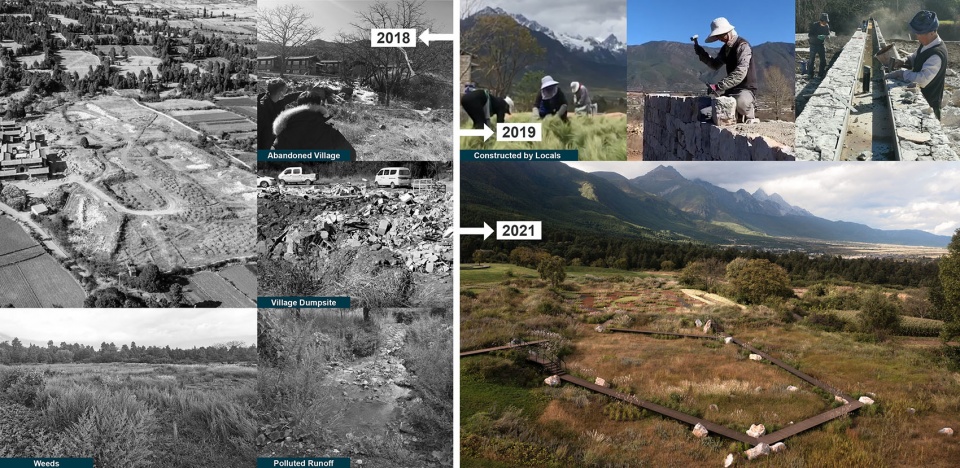
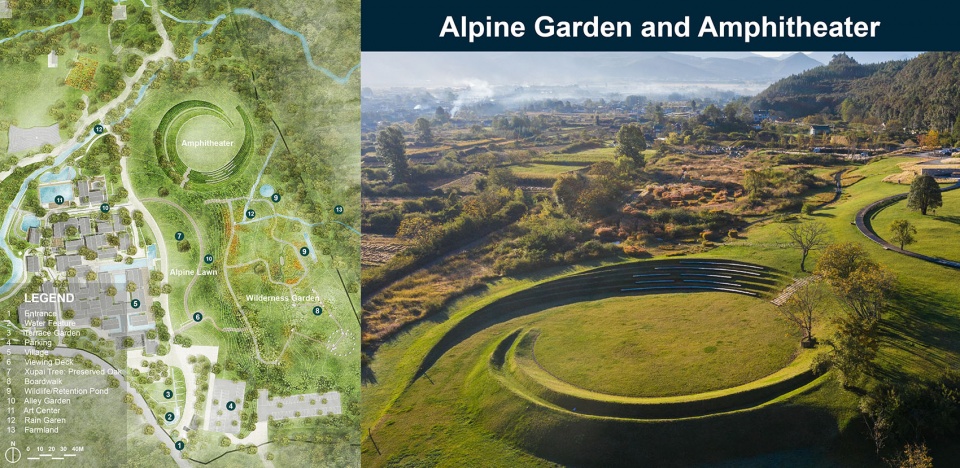
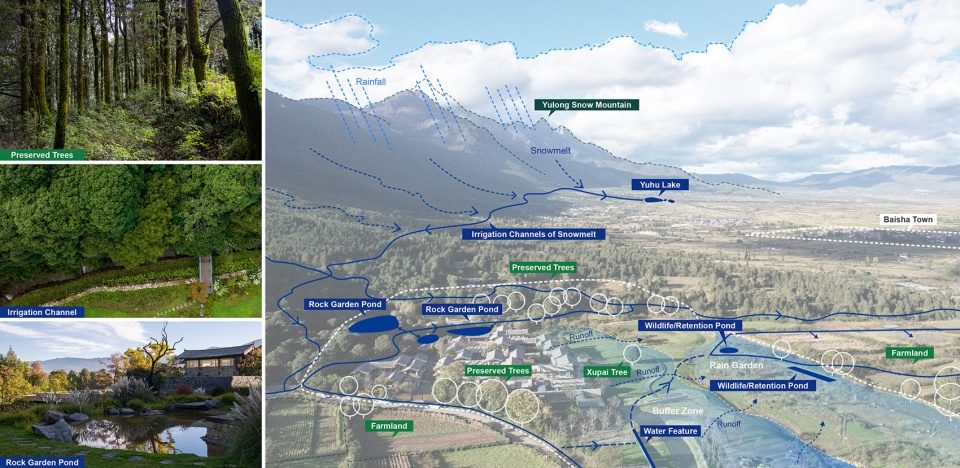
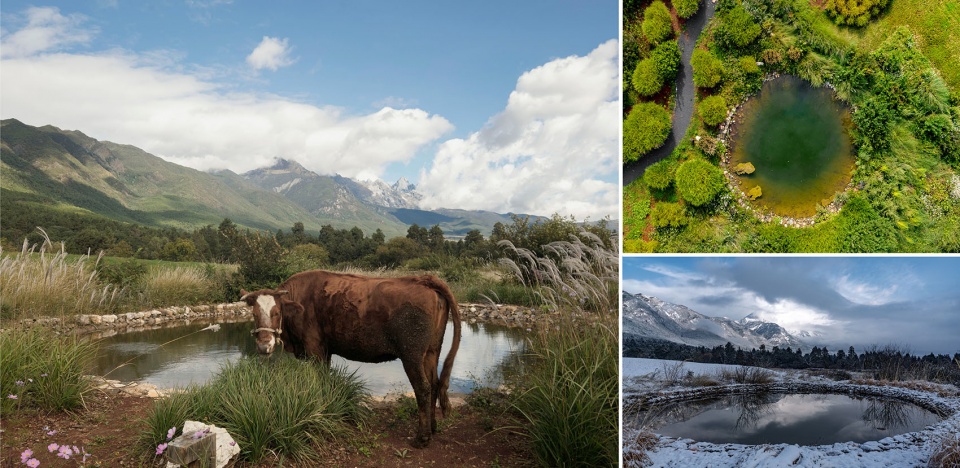
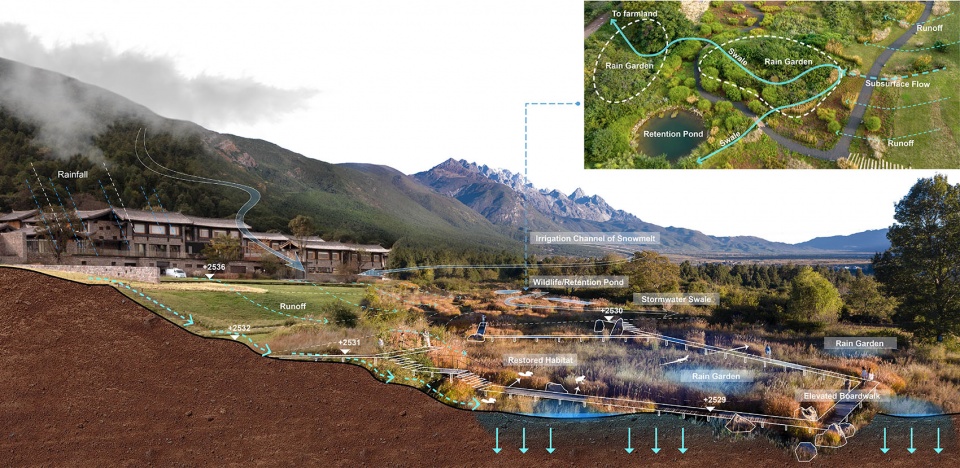
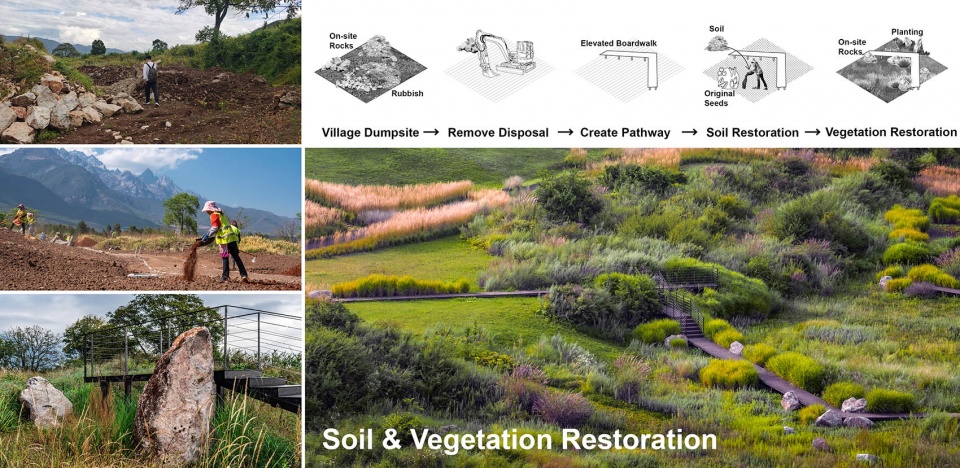

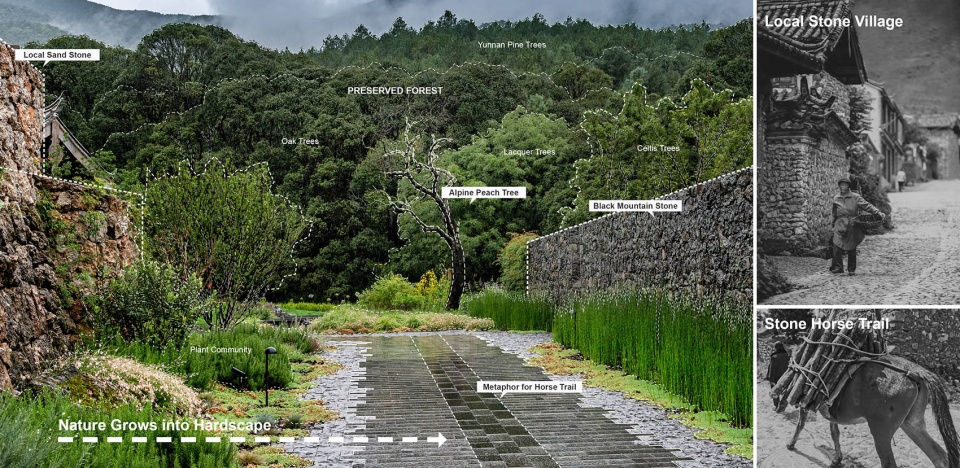
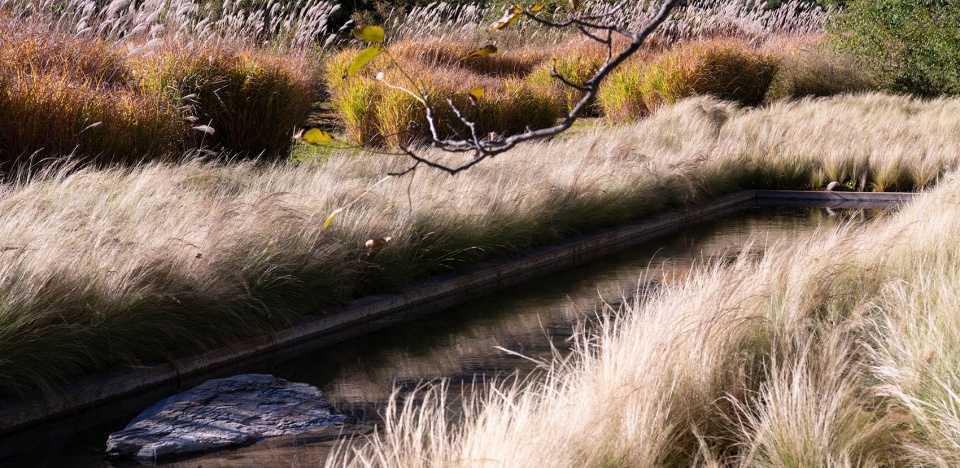
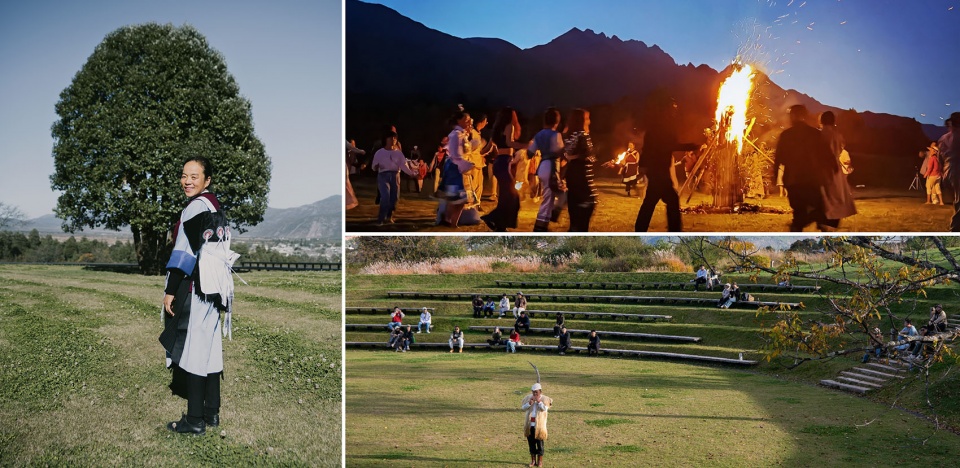
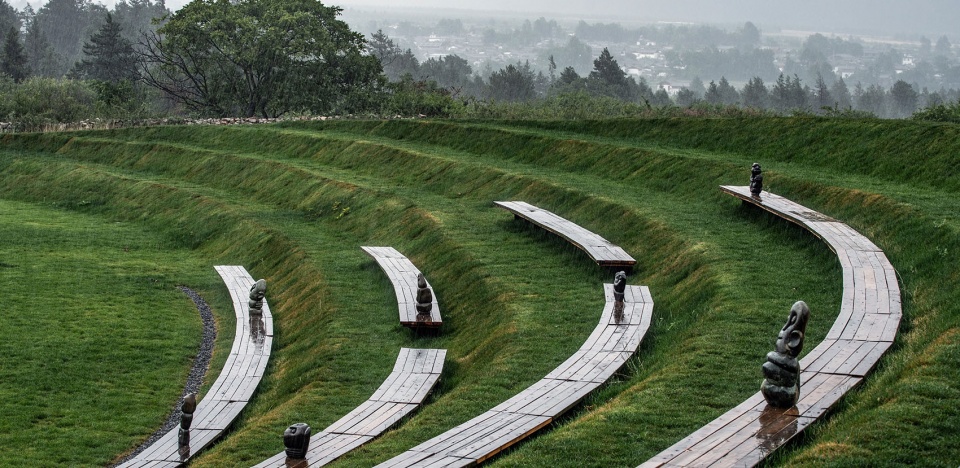

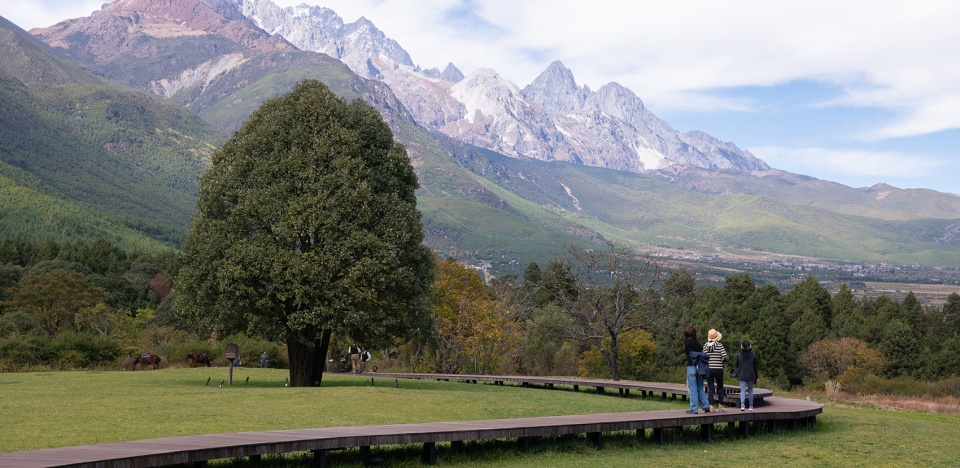

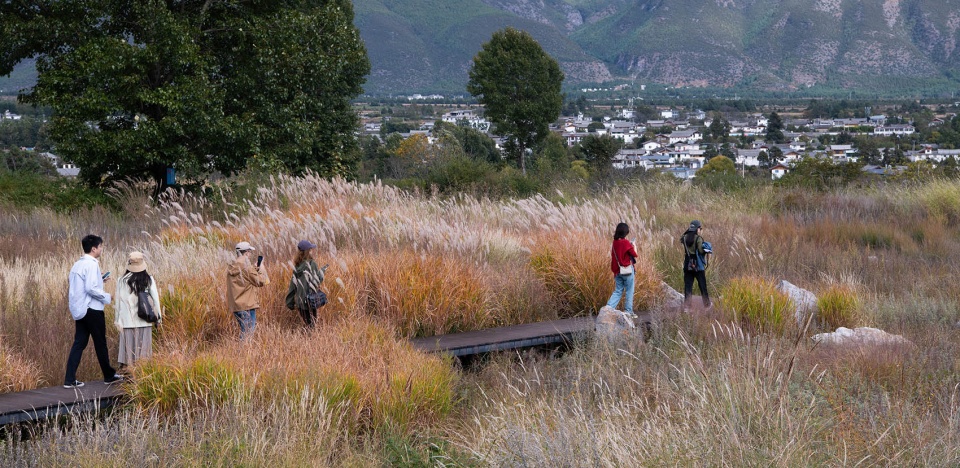
PROJECT NARRATIVE
Situated on the ecological hillside of Yulong Snow Mountain in Lijiang, at an altitude of 2540m, the site has regrettably been abandoned as a village dumpsite over the past decade. Over time, habitat loss poses great threat to sensitive local species. During the Pan-Himalayan monsoon season, there is a risk that it may fail to capture and retain stormwater runoff, thereby leaving the low-lying Baisha historic town vulnerable to flooding.
To improve soil health, this project restored 5,600 cubic meters of soil. Soil restoration treatments included removal of contaminated disposal, extensive testing on chemical and organic content, screening soil, and adding organic compost. During the restoration process, the Naxi tribe helped effectively tackle invasive plants by employing a natural solution: grazing cattle.
To fulfill up to 95% of the project’s water requirements, a rain garden system is implemented, reducing the risks of stormwater to the town. Stormwater swales also act as part of natural stream system to deliver snowmelt for agricultural water to Baisha historic town. The northern circular retention pond, known as the “Eye of Hylla” by locals, serves dual purposes as an irrigation source for the entire garden and a critical wildlife pond.
While restoring 90% of the native plant communities, the design transforms the space into a diverse alpine habitat. Conserved walnut and pear trees offer food and nesting spaces for birds. The boardwalk is elevated by 60cm to ensure undisturbed movement for animals and insects. Rocks not only act as aesthetics element but also serve as shelter for wildlife. The perennial meadow serves as a vital feeding and nesting habitat for pollinators throughout the year. The wilderness garden has become an outdoor educational center focusing on the importance of indigenous plants and wildlife to the biodiversity of Lijiang.
While the Naxi tribe possesses vibrant and rich cultural heritage, the educational prospects and interests of the tribal population face obstacles due to inconvenient transportation, population outflow, and limited educational resources.
The landscape design, shaped through the community engagement process, was enriched by the cultural context and experiences of tribal stakeholders, fostering a deep understanding of identity, culture and nature. With uncompromising craftsmanship, local stonemasons and carpenters executed all tasks related to stone and wood, utilizing materials sourced from within a 50 km radius. By using traditional techniques to carve and stack, they deliberately remained subtle texture details on every stone while making the design form contemporary and simple. The team carefully kept the tribal spiritual tree, Xupai, untouched and used it as a visual focal point to create culturally sensitive landscape which blends together new and old seamlessly. In response to the surrounding farmland context, the meandering wooden boardwalk led visitors through a characteristic alpine lawn interspersed with shamrocks, symbolizing the linear ridges of wheat fields.
As an elegant piece of land art, the amphitheater is thoughtfully positioned due north to provide a view of the sacred Yulong Snow Mountain. It accommodates great opportunities for tribal sculptors to exhibit their excellent works and becomes a welcoming outdoor social space for locals. During annual traditional festivals, the amphitheater becomes an immersive and interactive setting for experiencing Naxi dances and music.
Project Credits
Liangjun Zhou, International ASLA, Ting Zhou, Internation ASLA, Lead Designers
Xueting Liu, Hao Yu, Yuan Man, Liping Chen, Fang Qin, Pei Han, Chang Sun, Junxing Lv, Huiting Shi, Weiguang Hou, Hongjie Shi, Zijian Wang, Jingzhi Du, Qiuyu Zhang, Jingzhi Du, Yueheng Liu, Zhenhua Yang, Jiaqi Liu, Meng Zhang, Jie Chen, Wei Dong (Intern), Zilan Wang (Intern), Landscape Designers
Lijiang Cairunhong Engineering Co., Ltd., Local Naxi Stonemason
Shangri-La Hongmutang, Local Naxi Carpenter
Zhou Hongliang Lighting Design Beijing Co., Ltd., Lighting Consultant
Sichuan Xingli Garden Environment Engineering Co., Ltd., Landscape Contractors
Chengdu Shangye, Horticulture Co. Ltd.
Qiujin Hu, Fei Yang, Qiaohou He, Client Team
More: ASLA ; Z’scape
扫描二维码分享到微信